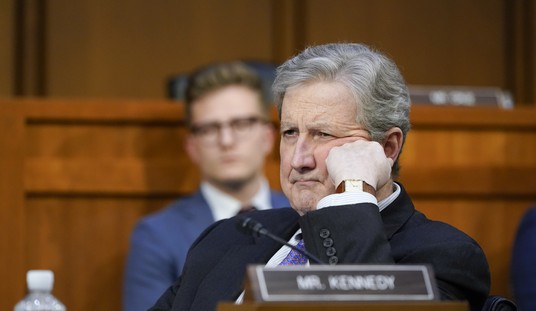China represents an existential threat to the national security of the US in terms of growth of military capabilities but more importantly in the economic realm as they pursue their “Made in China 2025” and Belt-Road initiatives.
The purpose of this series is to present the contents of one of those reports in “bite-sized chunks” that are more easily digestible in order to convey a better understanding of the Chinese economy and its long-term challenges to the US and the world. Part I introduced and summarized the Congressional Research Service report, “China’s Economic Rise: History, Trends, Challenges, and Implications for the United States,” which forms the basis for this series. So far, we have covered the report’s summary, a history of China’s economic development since 1979, the two main factors contributing to their development over the years, measuring the size of China’s economy, China’s role as the world’s largest manufacturer, changes in China’s wage and labor cost advantages, and foreign direct investment in China and the factors driving the outflow of foreign direct investment from China. Parts I, II, III, and IV can be found here, here, here, here, and here. This part covers China’s merchandise trade patterns, including major trading partners and major Chinese trading commodities.
Economic reforms and trade and investment liberalization have helped transform China into a major trading power. Chinese merchandise exports rose from $14 billion in 1979 to $2.5 trillion in 2018, while merchandise imports grew from $18 billion to $2.1 trillion. Refer to the table below, China’s Global Merchandise Trade: 1979-2018:

And refer to the figure below, China’s Merchandise Trade: 2000-2018:

China’s rapidly growing trade flows have made it an increasingly important (and often the largest) trading partner for many countries. According to China, it was the largest trading partner for 130 countries in 2013.
From 2000 to 2008, the annual growth of China’s merchandise exports and imports averaged 25.1% and 24.2%, respectively. However, China’s exports and imports fell by 15.9% and 11.2%, respectively, due to the impact of the global financial crisis. China’s trade recovered in 2010 and 2011, with export growth averaging 25.8% and import growth averaging 31.9%. However, since that time, China’s trade growth slowed sharply.
From 2012 to 2014, China’s exports and imports grew at an average annual rate of 7.2% and 4.1%, respectively. From 2015 to 2016 exports and imports fell by an average rate of 4.7% and 11.6%, respectively, reflecting a sluggish global economy and a decline in commodity prices (such as oil and ores). Refer to the figure below, Annual Change in China’s Merchandise Exports and Imports: 2000-2018:

However, in 2017, China’s exports and imports rose by 6.7% and 17.4%, respectively. Exports and imports in 2018 rose by 9.3 and 17.8%, respectively. However, during the first three months of 2001, China’s exports grew by 1.0%, while imports fell 1.1% year-over-year.
China’s merchandise trade surplus grew sharply from 2004 to 2008, rising from $32 billion to $297 billion. That surplus fell each year over the next three years, dropping to $158 billion in 2011. However, it rose in each of the next four years, reaching a record $679 billion in 2015 before falling to $611 billion in 2016, $489 billion in 2017, and $382 billion in 2018.
In 2009, China overtook Germany to become both the world’s largest merchandise exporter and the second-largest merchandise importer (after the United States). In 2012, China overtook the United States as the world’s largest merchandise trading economy (exports plus imports). As indicated in the figure below, China’s Share of Global Merchandise Exports: 1990-2017, China’s share of global merchandise exports grew from 2.0% in 1990 to 14.1% in 2015, but fell to 13.4% in 2016 and to 13.2% in 2017:

This table, China’s Major Merchandise Trading Partners in 2018, lists official Chinese trade data on its seven largest trading partners in 2018 (based on total trade).

These include the 28 countries that make up the European Union (EU28), the United States, the 10 nations that constitute the Association of Southeast Asian Nations (ASEAN), Japan, South Korea, Hong Kong, and Taiwan. China’s top three export markets were the United States, the EU28, ASEAN, while its top sources for imports were the EU28, ASEAN, and South Korea.
According to Chinese data, it maintained large trade surpluses with the United States ($282 billion), Hong Kong ($274 billion) and the EU28 ($129 billion), and reported large trade imbalances with Taiwan ($112 billion) and South Korea ($74 billion). China’s trade data differ significantly from those of many of its trading partners. These differences appear to be largely caused by how China’s trade via Hong Kong is counted in official Chinese trade data.
China treats a large share of its exports through Hong Kong as Chinese exports to Hong Kong for statistical purposes, while many countries that import Chinese products through Hong Kong generally attribute their origin to China for statistical purposes, including the United States.
China’s abundance of low-cost labor has made it internationally competitive in many low-cost, labor-intensive manufactures. As a result, manufactured products constitute a significant share of China’s trade. A substantial amount of China’s imports is comprised of parts and components that are assembled into finished products, such as consumer electronic products and computers, and then exported.
Often, the value-added to such products in China by Chinese workers is relatively small compared to the total value of the product when it is shipped abroad. China’s top 10 imports in 2018 are listed in the table below using the harmonized tariff system (HTS) on a two-digit level:

China’s top 10 imports in 2018 are listed in the table below, using the harmonized tariff system (HTS) on a two-digit level:

Major imports included electrical machinery and equipment; mineral fuels; nuclear reactors, boilers, and machinery (such as automatic data process machines and machines to make semiconductors); ores; and optical, photographic, medical, or surgical instruments. China’s biggest exports were electrical machinery and equipment; nuclear reactors, boilers, and machinery; furniture; plastics; and vehicles.
This may all change BIGLY because the US and China announced a trade deal on Friday, which is the first part of a major agreement between the two countries that has been sought by President Trump from the beginning of his presidency. Note the initial focus of this agreement on agricultural goods and energy products, which are two areas of world trade dominated by the US. The US is the largest exporter of agricultural products and is now a net energy producer thanks to Trump administration’s deregulation of the oil and gas industry and pro-business tax policies.
[A] senior U.S. administration official told reporters that the Chinese had committed to increasing “their purchases of manufactured goods, agricultural goods, energy products and services by at least $200 billion over the course of the next two years.”
The deal is expected to be signed in the first week of January in Washington between U.S. Trade Representative Robert Lighthizer and Chinese Deputy Premier Liu He, according to officials in Washington.
The text of the agreement includes chapters on intellectual property rights, technology transfer, food and agricultural products, financial services, exchange rate and transparency, increased trade, mutual assessment and dispute settlements, Chinese Vice Commerce Minister Wang Shouwen told reporters in Beijing.
President Trump has demonstrated that he is a master at using the US’s massive economic leverage to obtain trade deals favorable to US interests. It is a key part of his America First strategy. There is much more to come!
This part of the series ends here; the next part in the series will discuss the major long-term challenges facing the Chinese economy.
The end.













Join the conversation as a VIP Member